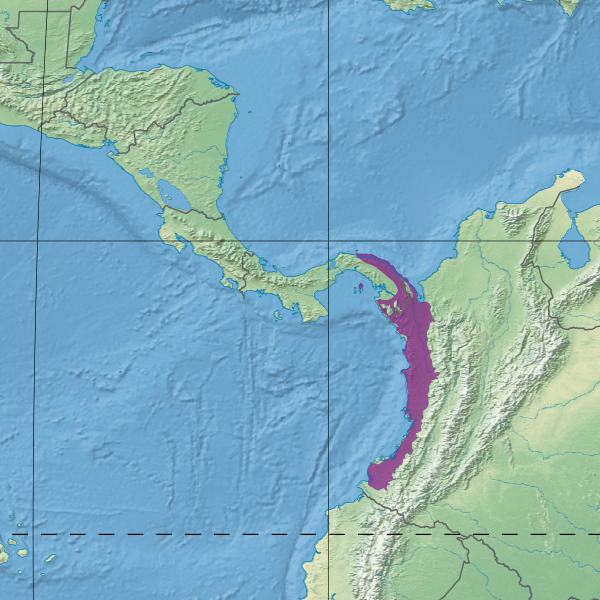The Chocó-Darién Moist Forests: A Biodiversity Hotspot
The Chocó-Darién moist forests ecoregion, spanning western Colombia and eastern Panama, is a true marvel of nature. Renowned for its unparalleled species richness and ecological significance, this lowland area is considered one of the most biologically diverse regions on the planet.
The Chocó-Darién Moist Forests: A Biodiversity Hotspot
The Chocó-Darién moist forests ecoregion, spanning across western Colombia and eastern Panama, is a true marvel of nature, renowned for its unparalleled species richness and ecological significance. This lowland area, situated between the Pacific Ocean and the western range of the Andes Mountains, is regarded as one of the most biologically diverse regions on the planet.
Geographical Extent and Climate
The ecoregion stretches from the eastern provinces of Darién and Kuna-Yala in Panama along the Pacific Coast of Colombia, encompassing the departments of Chocó, Cauca, Valle del Cauca, and Nariño. It includes a strip of land from sea level to an elevation of approximately 1,000 meters (3,280 feet) between the Pacific Ocean and the western slopes of the Andes Mountains.
High temperatures and abundant rainfall characterize the climate in this region. Annual temperatures average around 23.6°C (74.5°F), with a minimum of 18.6°C (65.5°F) and a maximum of 30°C (86°F). Annual rainfall ranges from 4,000 to 9,000 millimeters (160 to 350 inches), with the central region receiving the highest precipitation, sometimes exceeding 13,000 millimeters (510 inches). The northern and southern parts of the ecoregion experience relatively drier conditions, with some areas having short dry seasons from January to March.
Subregions and Topography
The Chocó-Darién moist forests can be divided into five distinct subregions:
- Northern Coast: This area includes the hill country regions of Darién and Urabá.
- Coastal Zone: This zone runs along the Pacific coast, generally up to 500 meters (1,640 feet) in elevation.
- Central Strip: Encompassing the northern wet forests, central rainforests, and the San Juan River area.
- Hills of Carmen del Atrato and San José del Palmar: This subregion includes the hilly areas surrounding these towns.
- Pacific Slope Jungles: These jungles span from 500 to 1,000 meters (1,640 to 3,280 feet) in elevation along the Pacific slope.
The mountainous areas within the ecoregion include the western slopes of the Cordillera Occidental in Colombia, as well as land massifs such as Cerro Torrá, Serranía del Darién, Sierra Llorona de San Blas, and Serranía del Baudó.
Flora and Fauna: A Biodiversity Hotspot
The Chocó-Darién moist forests are a genuine biodiversity hotspot, exhibiting an abundance and endemism across various taxa, including plants, birds, amphibians, and butterflies. Its biological distinctiveness is outstanding globally, with incredible biological, ecological, and evolutionary diversity.
This ecoregion, along with other distinct but interconnected ecosystems like the Baudo moist forests and the Magdalena Valley montane forests, collectively make up the Tumbes-Chocó-Magdalena biodiversity hotspot, recognized as one of the most biodiverse regions on the planet.
Plant Life
The ecoregion is home to at least 8,000 vascular plant species, of which almost 20% are found nowhere else. This remarkable level of plant endemism is a testament to the unique evolutionary processes that have shaped this region over time.
Fauna
The fauna of the Chocó-Darién moist forests is equally impressive. There is a high diversity of species, many of which are endemic to this ecoregion. From colorful birds to elusive mammals and many invertebrates, this region is a true paradise for wildlife enthusiasts and researchers alike.
Protection Status and Threats
Despite its immense ecological value, the Chocó-Darién moist forests face several threats. The northern and southern parts of the ecoregion have been significantly modified for ranching and farming activities. Additionally, logging for paper pulp, uncontrolled gold mining, coca growing, and industrialization pose severe challenges to the conservation of this region.
However, the central part of the ecoregion remains relatively intact, offering hope for preserving its unique biodiversity. Efforts have been made to establish protected areas, though the level of protection varies between Panama and Colombia.
In Panama, approximately 30% of the ecoregion's 13,335 square kilometers (5,149 square miles) of the ecoregion is somewhat protected. Notable protected areas include the Darién National Park, a UNESCO World Heritage Site.
In Colombia, the total protected area is under 3%, with protected areas such as Los Katíos National Park, Utría National Park, Sanquianga National Park, and Gorgona Island National Park playing crucial roles in conserving this ecoregion.
Ongoing Conservation Efforts
Recognizing the immense ecological value and the threats faced by the Chocó-Darién moist forests, various conservation efforts are underway. These efforts involve collaboration between governments, non-governmental organizations, local communities, and research institutions.
Some key conservation initiatives include:
- Establishing and expanding protected areas
- Implementing sustainable land management practices
- Promoting ecotourism as an alternative livelihood for local communities
- Conducting research and monitoring programs to understand the biodiversity and ecological processes better
- Raising awareness about the importance of this ecoregion among local communities and the general public
By combining scientific knowledge, local expertise, and international cooperation, there is hope for preserving the Chocó-Darién moist forests for future generations, ensuring that this remarkable biodiversity hotspot continues to thrive and contribute to the overall health of our planet.

Map illustrating the location of the Chocó-Darién moist forests (in purple).
